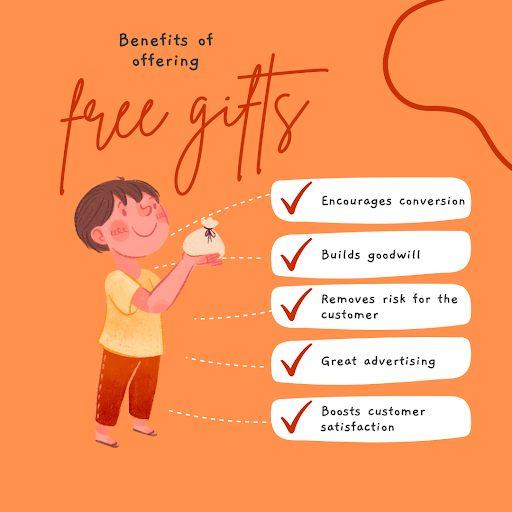10 Unique Virtual Selling Practices
Some say that working in sales has never been easier. Modern tech like unified communications as a service (UCaaS) means we can reach billions of customers without ever having to leave our homes. We can even sell from our smartphones!
However, just because we can reach people more easily, it doesn’t actually make the job itself any easier. Virtual selling still has plenty of challenges.
The modern online consumer is switched-on, savvy, and spoiled for choice. For you to stand out and make sales, you need to have some serious persuasive power. To meet your customers where they are, you may wish to look into how to sell online.’
How can you impress prospects, beat your competition, and rake in those virtual sales?
Here are some virtual selling tips to help out:
- Use video
- Use asynchronous video
- Research your audience
- Personalize
- Don’t be pushy
- Offer multiple purchase paths
- Don’t over-rely on flashy tech
- Be liberal with incentives
- Be clear about costs
- Ask for feedback
1. Use video

Free image sourced from Unsplash
This may seem obvious. After all, where have you been for the past five years if ‘using video’ comes as a novel idea?
But it is worth repeating, not least because the majority of the tips we’re about to give you are video-focused!
Video has the advantage of bringing you closer to your audience. People connect with people so, if you put the right person with the right selling style in front of the camera, video gives you an instant way to appeal to your prospects.
Video is also popular with search engines like Google. If you want a high search list ranking, video is your ticket to that prime position.
You can export Figma prototypes to video to show what lies ahead and to see if your ideas are likely to gain traction that translates to paying customers.
2. Use asynchronous video
Asynchronous video doesn’t happen in real time. Instead, they are pre-recorded and released later. For example, you may make a screen recording walking people through the steps they need to bring in an ERP integration Shopify works well with.
You can then go through your recording, edit it for clarity and brevity, and add in fun effects or missing information before releasing your video to audiences.
An asynchronous video has a few advantages that live video lacks. For a start, it’s not always possible to pull people into a live call. With asynchronous video, people can watch the video whenever it is convenient for them.
Asynchronous video also makes it easier to reach out to other time zones, are more secure than live video chats, and can be saved for later reference.
3. Research your audience

Free image sourced from Unsplash
This is marketing 101, but it’s important to repeat! Whether you’re selling cloud based contact center software, a fashion line, or anything in between, your job will be a lot easier if you know who you’re talking to.
Researching your audience is crucial if you’re going to tailor your sales process to your prospects. It will tell you things like:
- The average age of your prospects
- The likes and dislikes of your prospects
- Sales techniques that are likely to appeal to your prospects (and those that will not!)
- The kind of language your prospects will respond to
All of this is extremely useful for building meaningful connections with your prospects. For example, people over the age of 65 respond to different communication styles than younger demographics. Knowing your audience helps you to tailor your style for your prospects.
4. Personalize
The best audience research is a kind of behavioral science, which leads to a more personalized understanding of your customers. This is important because good personalization leads to all kinds of good things; increased sales, increased average order value, improved brand image, improved customer loyalty, and much more.
We live in an age of huge choice and short attention spans. Modern consumers do not have to give you their precious attention and, if they don’t feel that your offering is directly relevant to them and valuable for them, they won’t.
Personalizing your sales pitches can bring big results. So how can you do it?
Well, personalization is a big topic that, honestly, deserves an article all to itself, but the key takeaway is addressing people on their own terms, and speaking to their specific issues.
So, rather than casting a broad net with a pitch that discusses the wide benefits of your product, narrow your focus.
Talk to a specific group of people, using individual first names if appropriate, and tell them how your product will help them in particular. Address their specific challenges, issues, needs, and concerns.
Personalization is also important for building relationships. One-sided relationships are never successful, but mutually reciprocal relationships create lasting and fulfilling connections.
To make a good impression on your customers and to forge lasting relationships, get to know your customers, and then show that knowledge through personalization.

Image created by the author
5. Don’t be pushy
There’s a fine line between being assertive in your sales and being pushy. Where that line falls depends a lot on your audience.
Take ‘ask cultures’ and ‘guess cultures’, for example. The USA is an ‘ask culture’, and the UK is a ‘guess culture’. This small cultural difference has ruined many an American sales pitch in the UK, and vice versa.
The difference is subtle but crucial. Ask Culture salespeople are accustomed to explicitly asking people to buy their products. In an Ask Culture, this is normal because the will and/or ability to say ‘No’ is always assumed and asking is not seen as a burden to the askee.
However, Ask Culture sales tactics in a Guess Culture come across as incredibly pushy. Guess Culture people exposed to Ask Culture sales tactics feel like they are being ordered to buy a product, and they recoil.
Guess Culture sales tactics are far more subtle and tend to revolve around building relationships, dropping hints, and picking up on social cues.
Each approach has advantages and disadvantages, and neither is objectively ‘better’ or ‘worse’ than the other. Still, it’s a good illustration of how important it is to pinpoint the location of the ‘pushiness line’.
Using US ‘Ask’ tactics in the UK ‘Guess’ culture crosses the pushiness line, while UK ‘Guess’ tactics in the US ‘Ask’ culture will vanish without a trace.
How can you find the line? Well, audience research and personalization play a big part. But if you’re really worried about getting it wrong there are methods that can help.
A good way to reduce the pushiness factor without dulling the sales element too much is to involve your prospect in the conversation. Have a dialogue rather than a script.
Asking questions is a good way to do this. For example, rather than telling your prospects that they want to buy your phone system, ask them questions like ‘What is the best phone system for small business?’
They may answer by telling you their needs, at which point you can explain how your product addresses those needs. So, you are still selling, but your sales process talks with the prospect rather than at them.
6. Offer multiple purchase paths

Free image sourced from Unsplash
Immediate sign-up is the best, right? As a salesperson, you want people to order the second you make your pitch. It’s validating, it’s reassuring, and it leaves no room for your prospect to reconsider and back out.
However, not everybody wants to sign up straight away.
Above, we spoke about not being too pushy. One of the pushiest things you can do is to press prospects to buy right then and there.
Yes, some people may reconsider if you don’t capitalize on their engagement in the moment, but others will be very turned off by immediate pressure to buy.
The beauty of virtual sales is that it gives many, many avenues to purchase. As well as purchasing immediately, customers can potentially buy through social media or your e-commerce site at a time more convenient to them.
So, tell your customers about all the potential paths to purchase, and don’t press them to buy straight away. Many customers will appreciate the lack of pressure, and others may need some time to consider things before they choose to buy.
If there are many purchase paths, undecided customers can return, and take the path most comfortable for them, at a later date.
7. Don’t over-rely on flashy tech
The right tech can seriously enhance your selling techniques. But you shouldn’t rely on it too much.
Humans respond best to other humans. It’s what we’re designed to do. Ideally, your sales pitch should be good enough to stand on its own, on a human level, without any tech.
If you feel like your sales pitch wouldn’t be successful if you were delivering it face to face in a field with no gadgets or wifi or computers in sight, it’s unlikely to be much more successful with tech involved.
By all means, use technology to give your sales pitch a boost. Use fun graphics, clips, animations, e-commerce software, and more. But make sure that your pitch isn’t totally dependent on that tech.
Trust us, it’s the human element that wins sales 99.9% of the time.
8. Be liberal with incentives

Image created by author
Everyone loves free stuff. Free gifts, free samples, free trials of your product…whatever you can reasonably offer, offer it.
Offering incentives has a lot of benefits. Not only does it build goodwill between yourself and your prospect, it also removes part of the risk for the customer.
For example, if you want to sell ebooks, you could offer a section of the book for free. The customer will not be taking a leap in the dark when they sign up for the full version. Instead, they will know what they are getting and know that they like it.
By removing the risk and letting customers make an educated decision about your product, you encourage conversion.
The right incentives can also be great advertising for your brand. Let’s say that you are trying to sell perfume. If you give out free samples and your prospect wears them, people around them may ask about their new scent.
Your prospects may also post about your product on social media. All of this gives great brand exposure and encourages other customers to check you out.
9. Be clear about costs
Unexpected extra costs are a really bad look for your brand. Being hit with things like sales tax or big delivery charges is unpleasant for customers, and it reduces trust in your brand.
So, be totally clear and transparent about costs from the get-go. Make sure that your prospects understand what they are paying for, including any delivery or service charges.
If your service doesn’t have fixed charges, offer quotes, and make them as accurate as you possibly can. There’s some great price quoting software out there that can make this a quick and easy process.
10. Ask for feedback
The very best salespeople are constantly learning, refining, and improving. Either in-person, or online with mobile learning platforms. Either way, feedback is crucial to this process.
Feedback is also useful in other ways. For example, you can incorporate good reviews into your marketing.
Encourage your prospects to leave feedback at every stage of your sales funnel. Ask them to tell you what you’re doing well, what they don’t like, and how they think you could improve things.
That being said, lots of customers don’t want to bother leaving feedback. It can be time-consuming, and it adds friction to your purchase process. So, don’t make anyone feel forced to give feedback.
If you’re really desperate for feedback, try offering rewards. For example, send a discount code or a free sample to everyone who leaves you a review.
Use virtual sales to boost your brand and secure your place in the market
Virtual sales are the future. With more and more of us working remotely, shopping online, and bringing the Internet of Things into our homes, virtual sales make perfect sense.
Buying and selling virtually is convenient for brands and customers. By using the virtual selling techniques we’ve detailed here, you can increase conversions, boost your brand, and build lasting relationships with your customers.
About the author
John Allen is a driven marketing professional with over 14 years of experience, an extensive background in building and optimizing digital marketing programs across SEM, SEO, paid media, mobile, social, and email, with an eye to new customer acquisition and increasing revenue
